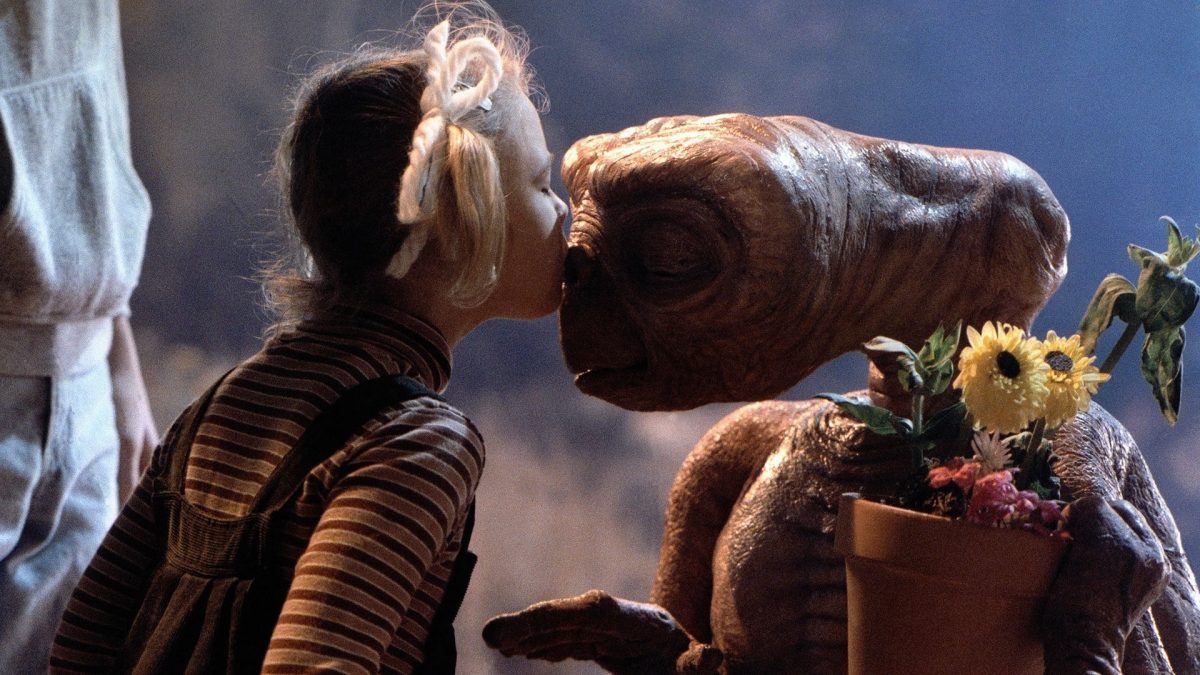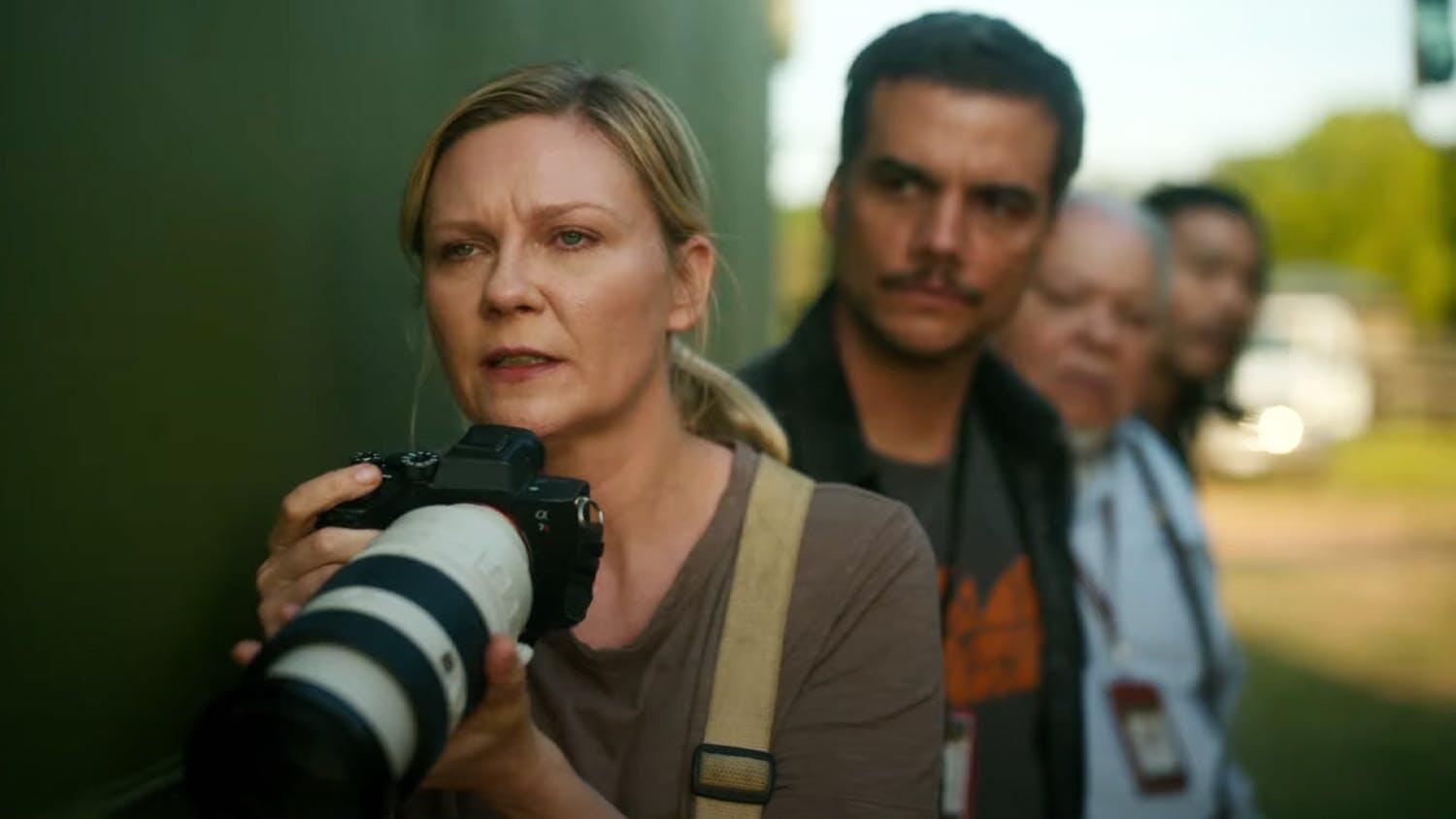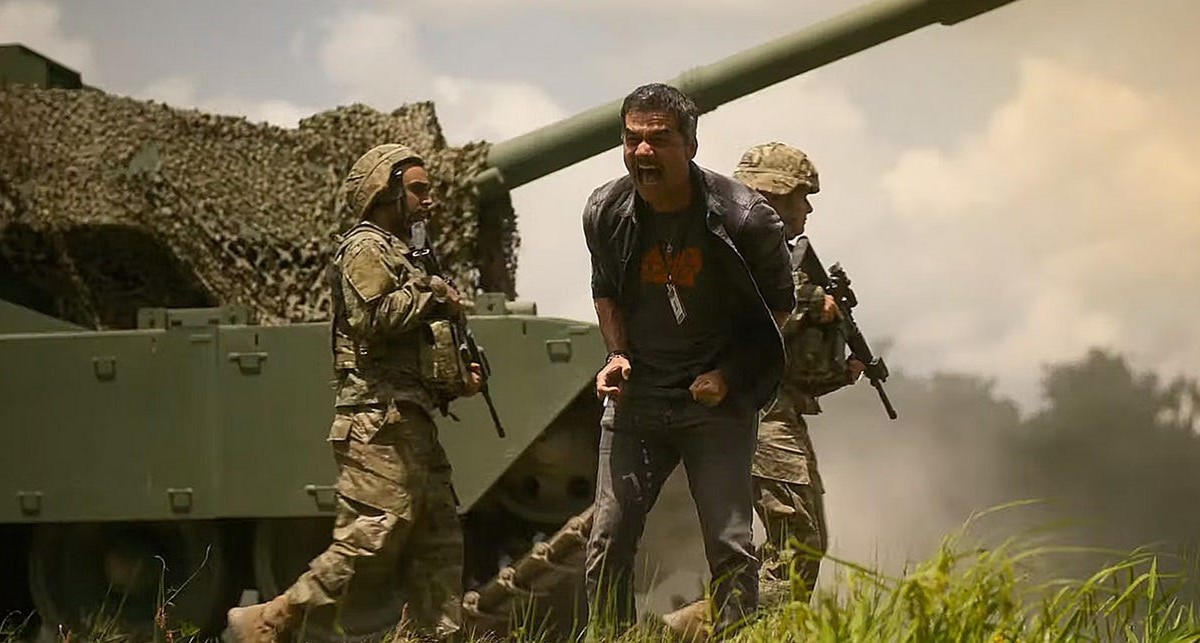The Pure and the Impure
by Pauline Kael
Steven Spielberg’s E.T. The Extra-Terrestrial envelops you in the way that his Close Encounters of the Third Kind did. It’s a dream of a movie—a bliss-out. This sci-fi fantasy has a healthy share of slapstick comedy, yet it’s as pure as Carroll Ballard’s The Black Stallion. Like Ballard, Spielberg respects the conventions of children’s stories, and because he does he’s able to create the atmosphere for a mythic experience. Essentially, E. T. is the story of a ten- year-old boy, Elliott, who feels fatherless and lost because his parents have separated, and who finds a miraculous friend—an alien, inadvertently left on Earth by a visiting spaceship.
If the film seems a continuation of Close Encounters, that’s partly because it has the sensibility we came to know in that picture, and partly because E.T. himself is like a more corporeal version of the celestial visitors at the end of it. Like Close Encounters, E.T. is bathed in warmth, and it seems to clear all the bad thoughts out of your head. It reminds you of the goofiest dreams you had as a kid, and rehabilitates them. Spielberg is right there in his films; you can feel his presence and his love of surprises. This phenomenal master craftsman plays high-tech games, but his presence is youthful—it has a just-emerged quality. The Spielberg of Close Encounters was a singer with a supple, sweet voice. It couldn’t be heard in his last film, the impersonal Raiders of the Lost Ark, and we may have been afraid that he’d lost it, but now he has it back, and he’s singing more melodiously than we could have hoped for. He’s like a boy soprano lilting with joy all through E. T., and we’re borne along by his voice.
In Spielberg’s movies, parents love their children, and children love their siblings. And suburban living, with its comfortable, uniform houses, is seen as a child’s paradise—an environment in which children are protected and their imaginations can flourish. There’s a luminous, magical view of Elliott’s hilly neighborhood in the early-evening light on Halloween, with the kids in their costumes fanning out over the neatly groomed winding streets as each little group moves from one house to another for trick-or-treat, and E.T., swathed in a sheet and wearing red slippers over his webbed feet, waddles along between Elliott and his teen-age brother, Michael—each of them keeping a firm, protective grip on a gray-green four-digit hand. E.T. isn’t just Elliott’s friend; he’s also Elliott’s pet—the film catches the essence of the bond between lonely children and their pets. The sequence may call up memories of the trick-or-treat night in Vincente Minnelli’s Meet Me in St. Louis, but it’s more central here. All the imagery in the film is linked to Halloween, with the spaceship itself as a jack-o’-lantern in the sky, and the child-size space visitors, who have come to gather specimens of Earth’s flora, wrapped in cloaks with hoods and looking much like the trick-or-treaters. (The pumpkin spaceship is silent, though when you see it you may hear in your head the five-note theme of the mother ship in Close Encounters, and the music that John Williams has written for E.T. is dulcet and hushed—it allows for the full score that the movie gets going in your imagination.)
E. T. probably has the best-worked-out script that Spielberg has yet shot, and since it seems an emanation of his childlike, playful side and his love of toys, it would be natural to assume that he wrote it. But maybe it seems such a clear expression of his spirit because its actual writer, Melissa Mathison, could see what he needed more deeply than he could himself, and could devise a complete structure that would hold his feelings in balance. Mathison was one of the scenarists for The Black Stallion and is a co-writer of The Escape Artist; it probably isn’t a coincidence that all three of these films have young-boy heroes who miss their fathers. Writers may be typecast, like actors; having written one movie about a boy, Mathison may have been thought of for another, and yet another. In E.T. she has made Elliott dreamy and a little withdrawn but practical and intelligent. And very probably she intuited the necessity for Elliott, too, to be bereft—especially since Spielberg himself had experienced the separation of his parents. Mathison has a feeling for the emotional sources of fantasy, and although her dialogue isn’t always inspired, sometimes it is, and she has an ear for how kids talk. Henry Thomas, who plays Elliott, and Kelly Reno in The Black Stallion and Griffin O’Neal as the boy magician in The Escape Artist are not Hollywood-movie kids; they all have an unusual—a magical—reserve. They’re all in thrall to their fantasies, and the movies take us inside those fantasies while showing us how they help the boys grow up. Elliott (his name begins with an “E” and ends with a “T”) is a dutiful, too sober boy who never takes off his invisible thinking cap: the telepathic communication he develops with E.T. eases his cautious, locked-up worries, and he begins to act on his impulses. When E.T. has his first beer and loses his inhibitions, Elliott, at school, gets tipsy, and in biology class when each student is required to chloroform a frog and then dissect it he perceives his frog’s resemblance to E.T. and sets it free. (His classmates follow suit.) The means by which Elliott manages to kiss a pretty girl who towers over him by at least a head is a perfectly executed piece of slapstick.
It’s no small feat to fuse science fiction and mythology. E.T. holds together the way some of George MacDonald’s fairy tales (At the Back of the North Wind, The Princess and the Goblin, The Princess and Curdie) do. It’s emotionally rounded and complete. The neighborhood kids whose help Elliott needs all come through for him. Even his little sister, Gertie (Drew Barrymore), is determined to keep the secret that E.T. is hidden in Elliott’s room. And when Elliott’s harried mother (Dee Wallace) rushes around in her kitchen and fails to see E.T.—fails to see him even when she knocks him over— the slapstick helps to domesticate the feeling of enchantment and, at the same time, strengthens it. Adults—as we all know from the children’s stories of our own childhoods, or from the books we’ve read to our children—are too busy and too preoccupied to see the magic that’s right there in front of them. Spielberg’s mellow, silly jokes reinforce the fantasy structure. One of them—Elliott on his bicycle dropping what look like M&M’s to make a trail— seems to come right out of a child’s mind. (Viewers with keen eyes may perceive that the candies are actually Reese’s Pieces.) Among the costumed children radiating out on Halloween is a tiny Yoda, and the audience laughs in recognition that, yes, this film is part of the fantasy world to which Yoda (the wise gnome of The Empire Strikes Back) belongs. And when E.T.—a goblin costumed as a ghost—sees the child dressed as Yoda and turns as if to join him it’s funny because it’s so unaccountably right.
Henry Thomas (who was the older of Sissy Spacek’s two small sons in Raggedy Man) has a beautiful brainy head with a thick crop of hair; his touching serio-comic solemnity draws us into the mood of the picture. When one of the neighborhood kids makes a fanciful remark about E.T., Elliott reprimands him, rapping out, “This is reality.” Dee Wallace as the mother, Peter Coyote as a scientist who from childhood has dreamed the dream that Elliott has realized, and the other adult actors are the supporting cast. Henry Thomas and E.T. (who was designed by one of the authentic wizards of Hollywood, Carlo Rambaldi) are the stars, and Drew Barrymore and Robert Macnaughton, as the teen-ager Michael, are the featured players. Elliott and his brother and sister are all low-key humorists. When Michael first sees E.T., he does a double take that’s like a momentary paralysis. Elliott has an honestly puzzled tone when he asks Michael, “How do you explain school to a higher intelligence?” Little Gertie adapts to E.T. very quickly—he may have the skin of a dried fig and a potbelly that just misses the floor, but she talks to him as if he were one of her dolls.
Spielberg changed his usual way of working when he made E.T., and you can feel the difference. The visual energy and graphic strength in his work have always been based on his storyboarding the material—that is, sketching the camera angles in advance, so that the graphic plan was laid out. That way, he knew basically what he was after in each shot and how the shots would fit together; his characteristic brilliantly jagged cutting was largely thought out from the start. On E.T.—perhaps because the story is more delicate and he’d be working with child actors for much of the time—he decided to trust his intuition, and the film has a few fuzzy spots but a gentler, more fluid texture. It’s less emphatic than his other films; he doesn’t use his usual wide-screen format—he isn’t out to overpower you. The more reticent shape makes the story seem simpler—plausible. The light always has an apparent source, even when it gives the scenes an other-worldly glow. And from the opening in the dense, vernal woodland that adjoins Elliott’s suburb (it’s where we first hear E.T.’s frightened sounds), the film has the soft, mysterious inexorability of a classic tale of enchantment. The little shed in back of the house where Elliott tosses in a ball and E.T. sends it back is part of a dreamscape.
The only discordant note is the periodic switch to overdynamic camera angles to show the NASA men and other members of the search party whose arrival frightened off the space visitors and who keep looking for the extraterrestrial left behind. These men are lined up in military-looking groups, and the camera shows us only their stalking or marching bodies—they’re faceless, silent, and extremely threatening. Their flashlights in the dark woods could be lethal ray guns, and one of them has a bunch of keys hanging from his belt that keep jangling ominously. The rationale is probably that we’re meant to view the men as little E.T. would, or as Elliott would, but most of the time neither E.T. nor Elliott is around when they are. Later in the movie, in the sequences in a room that is used as a hospital, it’s clear that when adults are being benevolent in adult terms they may still be experienced by children as enemies. But the frequent intrusive cuts to the uniformed men—in some shots they wear moon-travel gear and head masks—are meant to give us terror vibes. They’re abstract figures of evil; even the American-flag insignia on their uniforms is sinister—in modern movie iconology that flag means “bad guys.” And this movie doesn’t need faceless men; it has its own terror. Maybe Spielberg didn’t have enough faith in the fear that is integral to any magical idyll: that it can’t last.
When the children get to know E.T., his sounds are almost the best part of the picture. His voice is ancient and otherworldly but friendly, humorous. And this scaly, wrinkled little man with huge, wide-apart, soulful eyes and a jack-in-the-box neck has been so fully created that he’s a friend to us, too; when he speaks of his longing to go home the audience becomes as mournful as Elliott. Spielberg has earned the tears that some people in the audience—and not just children—shed. The tears are tokens of gratitude for the spell the picture has put on the audience. Genuinely entrancing movies are almost as rare as extraterrestrial visitors.
The New Yorker, June 14, 1982





